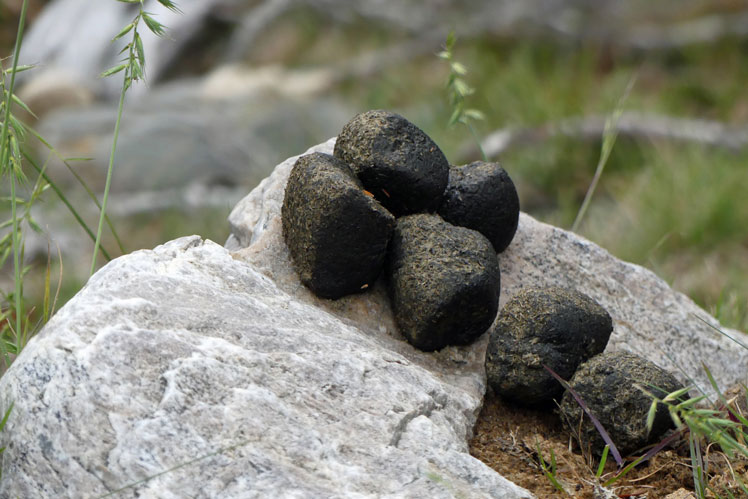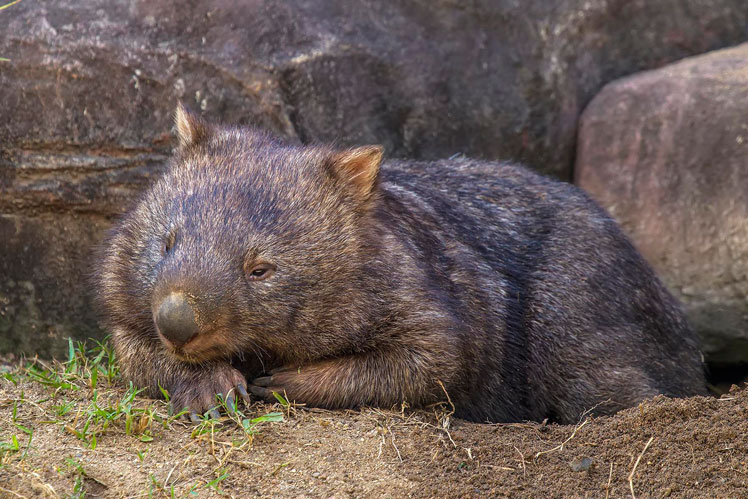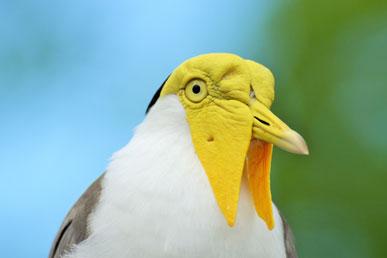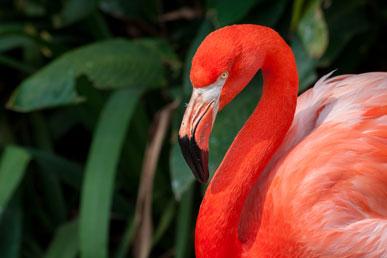
The wombat is a burrowing herbivore that looks like a bear cub or a very large hamster. Wombats are common in Australia and Tasmania.
This animal is characterized by a slow metabolism – the eaten grass can be digested for up to 14 days.
Wombats have keen hearing and sense of smell, but rather poor eyesight. Despite the outward clumsiness, they are very fast: escaping from danger, the wombat can easily climb a tree, dive into a pond or run away.
Wombats can reach speeds of up to 40 km/h, and on short distances they reach speeds of 60 km/h. At this speed, they can run for more than a minute.

According to the structure of the body and individual parts of the body, the wombat has much in common with the koala, but in reality their relationship is quite distant. Their body is compact, and their limbs are short and strong.
The body length of the wombat is from 70 to 130 cm, and the weight is from 20 to 45 kg. The largest living wombat is the broad-browed wombat.
The Wombat family includes 3 modern species:
- Queensland wombat
- Long-haired wombat (or woolly-nosed wombat, or broad-nosed wombat)
- Short-haired wombat (or bare-nosed wombat, or Tasmanian wombat)
The wombat has almost no tail, and most of the rear is protected by subcutaneous cartilage. Hiding in a hole, a wombat can close it with itself – cartilaginous "armor" is beyond even predators. Moreover, the wombat can even kill an overly persistent enemy with blows from behind and from below on the head, which thus beats against the ceiling of the hole.
A strong and fearless wombat can be dangerous for a person who tries to touch him and the like.


Wombats eat young grass shoots. Sometimes plant roots, mosses, mushrooms and berries are also eaten. The split upper lip allows wombats to choose what they eat very precisely. Thanks to her, the front teeth can reach right to the ground and cut off even the smallest shoots.
As already mentioned, the metabolism of wombats is very slow and efficient. They need up to 14 days to digest food.
Wombats are the most economical water consumers of all mammals after the camel: they only need 22 ml of water per 1 kg of body weight per day. Even such animals, perfectly adapted to the conditions of life in Australia, as representatives of the kangaroo family, spend four times more water. Wombats do not tolerate cold well.
Interesting fact
Wombats' feces are cube-shaped, which is caused by the special structure of their final part of the intestine.



Wombats use their sharp claws to dig habitable caves in the ground, which sometimes form complex tunnel systems. Typically, most of these systems are about 20 meters long and 3,5 meters deep. If the sites of individual individuals intersect, caves can be used by different individuals at different times. Wombats are active at night when they come out in search of food. During the day they rest in their shelters.
The adult wombat has almost no natural enemies. One of the few is the dingo imported by man. In addition, the Tasmanian devil may be a danger. But, as mentioned earlier, the back of the wombat's body is extremely hard due to the thick skin, cartilage, and bones. And in case of danger, they can, turning their backs, block their hole and repel most of the attackers, or crush their limbs against the walls of their living cave. In the back of the back, on the pelvic bones, the wombat has a kind of shield that protects it from an attack from behind. The wombat also inflicts strong blows to the head – it butts like a ram or a goat. If a dog crawls into his hole, he waits for it without leaving the spot, and then tries to drive it into a corner, against the wall of the hole, and strangle it with a shield there.


Wombats have a rather good-natured nature, love affection and are easily tamed. They can live in the house and, to some extent, can be trained. In Australia, they are sometimes kept as pets. However, when dealing with wombats, especially wild ones, certain caution is required: they are shy, not very smart and, like many marsupials, have a difficult to predict behavior; mistaking a person's actions for aggression, they can, in defense, bite or inflict a serious wound with sharp claws. An adult wombat is quite heavy and strong and can be dangerous even for an adult. In addition, due to their tendency to dig holes, they can undermine walls, fences, and harm green spaces.
After the settlement of Australia by Europeans, the range of wombats was significantly reduced. The reasons for this were the destruction of their habitats, competition with imported species (in particular, with the domestic cat) and hunting for wombats. Today, only 118 specimens of the Queensland wombat remain, living in a small reserve in Queensland. The other two species are more common and are not yet endangered.
Also, many wombats die under the wheels of cars. In areas where human impact is low, the abundance of wombats is determined by the availability of suitable food.










